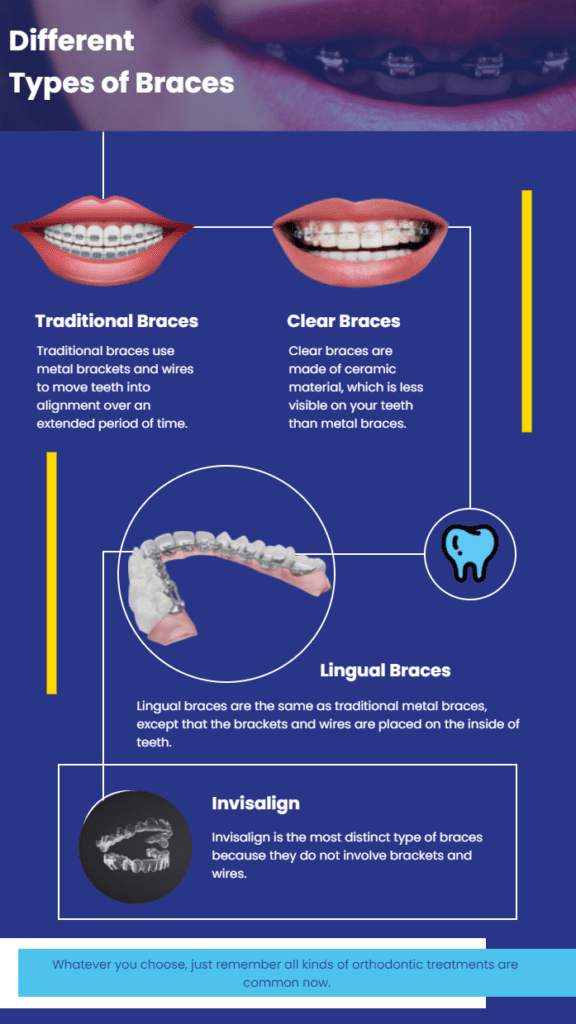How Cumming Orthodontics Addresses Common Braces and Invisalign Concerns
How Cumming Orthodontics Addresses Common Braces and Invisalign Concerns
Blog Article
Comprehensive Overview to Orthodontics Procedures for Correcting Oral Misalignments
Comprehending the details of each procedure, including their systems, advantages, and possible drawbacks, is important in making educated choices about one's orthodontic treatment. As we navigate with the thorough overview to orthodontic procedures for fixing dental misalignments, the complex information of each approach will unfold, shedding light on the path toward a functional and harmonious oral placement.
Orthodontic Procedures Overview

In addition to traditional dental braces and clear aligners, orthodontists may likewise recommend various other treatments like headgear, palatal expanders, or retainers to deal with specific alignment concerns (aligners). These procedures are customized to every client's unique demands and might involve a mix of therapies to achieve the wanted outcomes. Regular changes and tracking are important parts of orthodontic therapy to guarantee progress gets on track and to make any essential adjustments along the road. By undertaking orthodontic procedures, people can not only attain a straighter smile yet likewise boost their general oral health and wellness and function.
Standard Braces: Exactly How They Function
When taking into consideration orthodontic treatments for dental imbalances, standard braces stand out as a time-tested approach for remedying teeth positioning. Traditional dental braces consist of braces, cables, and bands that work with each other to apply continuous stress on the teeth, slowly moving them right into the desired placement.
One secret aspect of just how standard braces job is the process of bone makeover. As pressure is related to the teeth with the braces, the bone bordering the teeth is reshaped to sustain the new tooth settings. This renovation is essential for the long-lasting stability of the remedied alignment. Individuals will require regular modifications at the orthodontist's office to make sure the dental braces remain to use the appropriate stress for effective teeth motion.
Unseen Aligners: Benefits And Drawbacks
Unseen aligners provide a very discreet and hassle-free option to conventional braces for remedying dental misalignments. These clear, custom-made trays are practically invisible when used, making them an attractive choice for people looking for a much more cosmetically pleasing orthodontic therapy. Among the primary advantages of unnoticeable aligners is their removability, enabling for less complicated upkeep of dental health contrasted to traditional dental braces. People can remove the aligners before eating or brushing their teeth, reducing the risk of food obtaining stuck in the device and simplifying the cleaning process.

Surgical Orthodontic Options
Surgical treatments in orthodontics present feasible alternatives for dealing with intricate dental misalignments that might not be effectively solved via conventional orthodontic therapies. While standard dental braces and undetectable aligners can remedy many orthodontic problems, specific instances require surgical intervention to accomplish optimum outcomes. Surgical orthodontic options are usually advised for extreme malocclusions, significant jaw inconsistencies, and situations where the underlying bone framework requires alteration to attain proper alignment.
One common medical orthodontic treatment is orthognathic surgical procedure, which entails rearranging the jaws to correct functional issues such as difficulty chewing or speaking. This surgery is frequently carried out in partnership with an orthodontist who assists line up the teeth before and after the procedure. Surgical orthodontics may also involve treatments to reveal influenced teeth, eliminate excess periodontal tissue, or reshape the jawbone to create an extra unified face profile.
Before considering medical orthodontic alternatives, individuals go through a detailed assessment to identify the necessity and potential advantages of such treatments. cumming invisalign. While surgery might appear overwhelming, it can dramatically boost both the function and visual appeals of the smile in cases where standard orthodontic treatments fall short
Retainers and Post-Treatment Treatment

Failure to conform with post-treatment treatment instructions can result in regression, where the teeth slowly move back towards their initial placements. Constant retainer wear, excellent oral hygiene, and routine oral check-ups are necessary for maintaining the results accomplished via orthodontic surgery and guaranteeing the long-lasting security of the corrected dental positioning.
Final Thought
In verdict, orthodontic procedures provide different choices for dealing with oral imbalances. Traditional dental braces use metal brackets and cables to move teeth into appropriate positioning. Unseen aligners give a more very discreet alternative but may not appropriate for all cases. Surgical orthodontic options are available for much more severe misalignments. Retainers are typically used post-treatment to maintain the new alignment. Overall, orthodontic procedures can effectively boost oral wellness and visual look.
As we browse with the extensive guide to orthodontic treatments for remedying dental imbalances, the complex details of each method will certainly unfold, shedding light on the course toward a harmonious and useful dental positioning. - orthodontics
One of the most usual orthodontic treatments is the usage of braces, which consist of steel brackets and cables that apply mild pressure to progressively move teeth right into the preferred position.When taking into consideration orthodontic treatments for oral misalignments, typical braces stand out as a reliable method for dealing with teeth positioning. In addition, unnoticeable aligners might not be appropriate for intricate orthodontic problems that call for more substantial teeth movement, as they are normally recommended for moderate to modest cases. Retainers are personalized orthodontic devices created to hold teeth in their corrected settings after the conclusion of orthodontic treatment.
Report this page